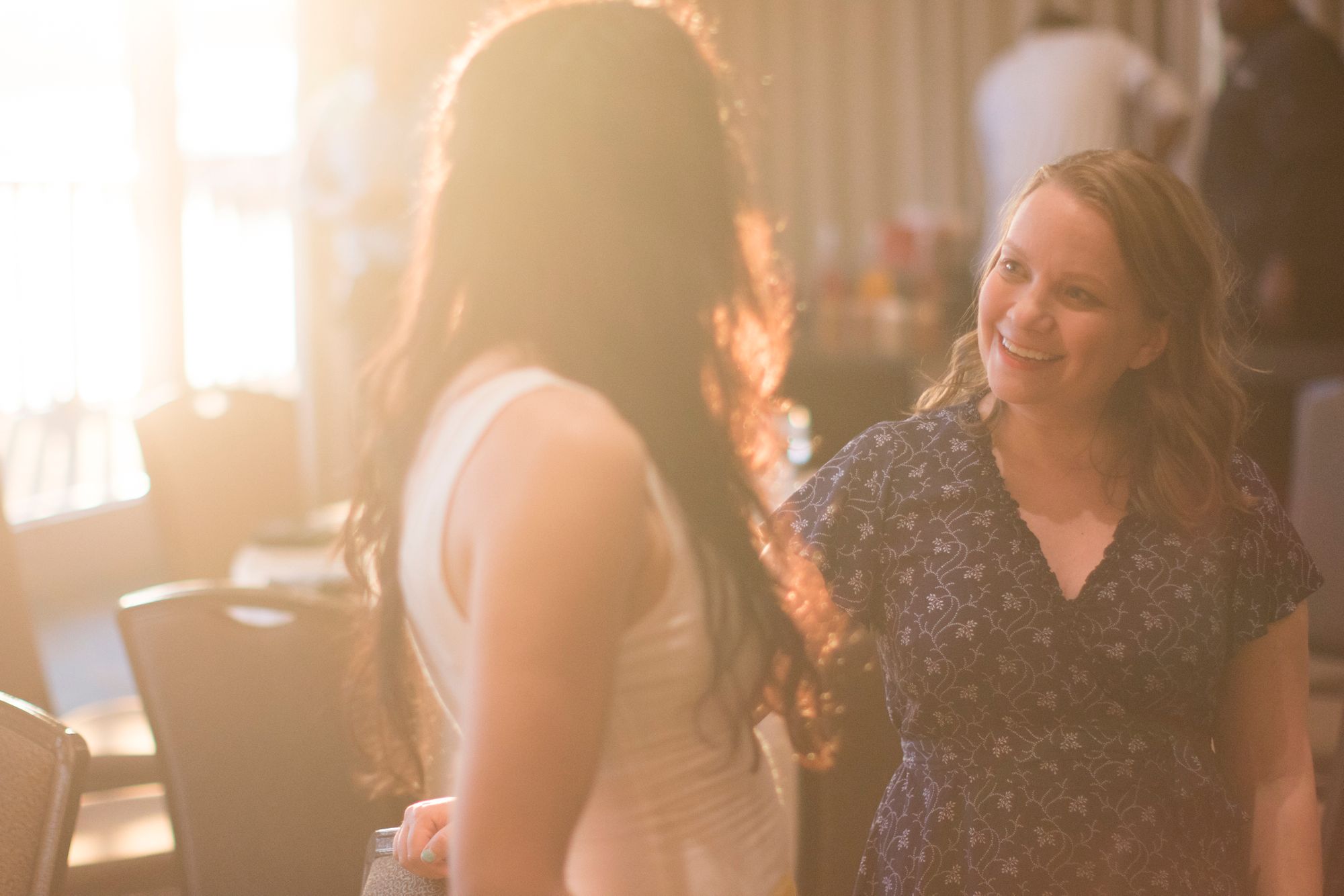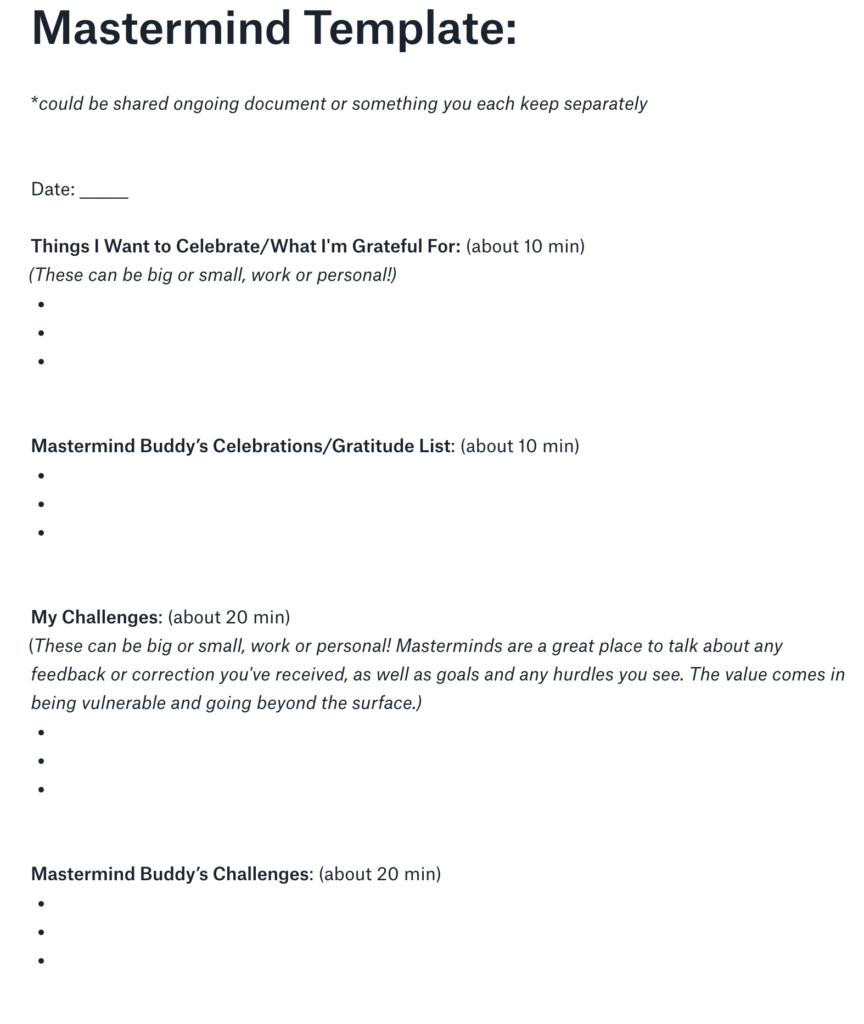
We Launched a Mastermind Partnership Program To Connect Teammates – Here’s How We Did it
Director of People @ Buffer
Isolation can be a persistent challenge for distributed teams.
In our most recent State of Remote Work report, we found that loneliness was the second most common problem remote workers share.

At Buffer, we’ve tried to counter this challenge in many different ways, like rotating weekly chats, online team events, and encouraging local meetups.
Some initiatives have made a dent, but as we’ve grown the signal came up again and again: teammates felt disconnected and lacked context from other areas of the company.
So this year, we revamped and revisited one of the key practices from Buffer’s early days to try and break through the isolation barrier: peer mastermind partnerships.
Masterminds – structured, 1-hour sessions on at least a bi-weekly basis with someone at a similar peer level – are designed to establish a deep connection with a peer outside your immediate area for long-term support, accountability and continuity.
Here’s how we launched this initiative and the results on our team so far.
The history of mastermind partnerships at Buffer
In late 2014, when our company was only 26 or 27 teammates total, we instituted our first peer-to-peer mastermind program, modeled off the one Joel describes in this post. Each teammate was paired with another based on tenure and role.
At this time, masterminds and rotating, weekly “pair calls” were considered part of your job, and we encouraged deep reflection before each mastermind.
For many, this was an impactful partnership (we even have a few that mastermind pairings have endured 5+ years!) For others, the habit lapsed as we grew from a startup to a scaleup.
In this transition, our focus on culture sometimes took a backseat to our company and team growth. After a while, masterminds and pair calls went from being required to optional.
Combating remote work isolation over time
In evaluating team health, one common survey question is “Do you have a work best friend?”
Asking this question over time, we found that while some teammates answered yes, it wasn’t a common thread across the team. And though each area was close-knit, it was harder and harder to keep up with what was going on in other parts of the team.
As a People team we experimented with ways to connect teammates:
- We encouraged pair calls more, using a handy Slack tool called Donut to automate pairing. (We still do these! About 30-40% of the team opt in.)
- We tried hosting casual Zoom hangouts, which we called Impromptu Hours. (These have now morphed into a more structured monthly get-together we host in two time zones, calling Gatherings)
- We tried an asynchronous approach, with a collaborative document of weekly teammate goals. (Not many participated.)
- We launched a “water cooler” channel in Slack and peppered it with fun, get-to-know-you questions. (These still pop up, but participation varies — and the connections, while fun, are fairly surface-level.)
- We interviewed teammates and shared their profiles in our weekly newsletter. (Readership was high at first, but tapered off.)
In early 2017, with isolation coming up as a recurring theme in team surveys, we re-surfaced the ideas of masterminds again, but the time wasn’t right. Many managers didn’t want to add an additional meeting onto the schedule of already busy teammates.
Masterminds 2.0
It wasn’t until 2019 that Masterminds 2.0 began to gain steam. Teams were all feeling a hunger for:
- Cross-area context
- Deeper connections
- A work friend and consistent partner (who doesn’t change even if you change area or manager)
Here’s how we define masterminds today:
A Buffer Mastermind is a structured, 1-hour session on at least a bi-weekly basis with someone at a similar peer level. Masterminds are designed to establish a deep connection with a peer outside your immediate area for long-term support, accountability and continuity.
Our first decision to make was whether to make them required or only optional. Personally, I believed we couldn’t be successful if we didn’t push folks a little to get outside their comfort zone and try to connect with another teammate. Eventually, we launched them on a company-wide level, while still allowing for folks to opt out in special cases.
Launching the initiative
After gathering manager advice and support, we prepared for the launch:
First, we got a baseline metric of the “connectedness” of the team through our CultureAmp quarterly survey. This’ll help us determine how masterminds do or don’t improve this figure.

Then, we carefully matched teammates based on:
- Differing teams
- Similar tenure
- Similar role (individual contributor <> individual contributor, etc)
- Time zone overlap
We ran our proposed pairings past all the team leads for any additional context or suggestions. When the pairings felt strong, I direct-messaged each pair and gave some initial instructions. These personal messages and having a DM space already started allowed folks to more easily converse and get their first chat scheduled.
Finally, we outlined questions and prompts for the first few mastermind syncs in order to set teammates up with a firm foundation to build on for more vulnerable conversations later:
1st Mastermind: Personal stories
In their first mastermind, we encouraged teammates to share their “personal stories.” This longstanding Buffer tradition opens space for each person to tell the full story of their life – childhood, family, schooling, hobbies, work history, how they came to Buffer – over the course of 30 minutes. It’s always surprising how much these reveal, and how they open up a relationship vulnerably. This foundation helps set the stage for knowing each other beyond surface-level.
2nd Mastermind: Laying the foundation:
For the second mastermind, we asked teammates to lay the foundation with questions like:
- How are things feeling in your role?
- What does your typical day look like?
- Is there anything blocking you?
- Where do you find the most joy in your work?
- What sorts of hobbies/side projects do you do?
- Share any challenges (work or personal) that you might want accountability with.
To help teammates make the most of their mastermind pairings, we also created a template they could use to keep a running list of notes from each conversation. (View here as PDF!)

To fully kick off masterminds with some excitement and fun, we hosted an online event where longstanding mastermind partners offered advice and the team broke up into small groups to strategize about how to make masterminds successful.
What makes for a successful mastermind
Here are some of the tips we shared with our teammates on establishing a successful mastermind partnership:
- Establish your mastermind time as non-negotiable in your schedule. Set the calendar event for recurring. All other events should fit around this, rather than the other way around.
- Build in some reflection time (even just 10 minutes) before and/or after. Take notes and review them occasionally to keep track of what your mastermind partner is working on to bring it up later or keep fresh to help with accountability.
- Work toward a place of vulnerability and open sharing. Masterminds are a safe place to share highs and lows — both personal and work-related.
- Masterminds aren’t a normal “work sync” – don’t use them for project check-ins or standup-style syncs, especially if the teammates work closely together already.
- Don’t solve their problem; just listen. Ask questions and use the time as a brainstorm session more than just giving each other advice. A lot of value comes in listening to one another and being able to share freely.
- Rely on the mastermind partner in between chats. Sometimes mastermind buddies can be that steady rock to keep one another grounded. Being able to message them for a quick bit of encouragement, or just to share a smile, is part of the invaluable nature of a mastermind.
How the team has responded to masterminds
So far, the team has responded positively to Masterminds 2.0.Here’s how participation has looked during our first 3 months of the program:

And here are some teammate comments from an anonymous survey:
- “I’ve found that opening up with my buddy has helped me open up with my managers.”
- “Talking to someone outside of my team is really valuable for me.”
- “I think it’s been really helpful to have a designated space to share and grow with another Bufferoo who isn’t my manager or someone on my team.”
- “A great opportunity to connect with teammates and dive deeper into conversations that might not happen in a typical pair call.”
- “It offers a safe space outside of the team to share both celebration and challenges on a different light and a different emotional charge. It’s something I did not realize I was missing before.”
We’ve also seen some lovely notes in our Slack “Gratitude Channel”:


There’s a lot of nuance to developing a strong mastermind partnership — sometimes time zone overlap doesn’t work, folks change roles, or personalities just don’t “click.” We want folks to give each pairing a chance, but also not feel locked into it indefinitely.
We’re shifting things on an ongoing basis and also working in new teammates after their first 90 days of onboarding.
We’ll re-evaluate connectedness in each teammate survey and do a deeper look at the success or lack-of-success 4-5 months after the launch. We believe it takes at least 3 months to truly connect and find masterminds vital to your work success — so we want to give this experiment the at least that long.
Will this latest version of masterminds ebb and flow the way our earlier iteration did? Perhaps — there is a time and place for all culture norms. We believe this re-iterates our commitment to our values and the mental health of our employees and will do all we can to support them.
Over to you!
Have you taken part in a mastermind pairing or group before? What did you find most valuable? What wouldg you look for in a mastermind partnership? What would you hope to get out of one?
Try Buffer for free
140,000+ small businesses like yours use Buffer to build their brand on social media every month
Get started nowRelated Articles

In this article, the Buffer Content team shares exactly how and where we use AI in our work.

With so many years of being remote, we’ve experimented with communication a lot. One conversation that often comes up for remote companies is asynchronous (async) communication. Async just means that a discussion happens when it is convenient for participants. For example, if I record a Loom video for a teammate in another time zone, they can watch it when they’re online — this is async communication at its best. Some remote companies are async first. A few are even fully async with no live ca

Like many others, I read and reply to hundreds of emails every week and I have for years. And as with anything — some emails are so much better than others. Some emails truly stand out because the person took time to research, or they shared their request quickly. There are a lot of things that can take an email from good to great, and in this post, we’re going to get into them. What’s in this post: * The best tools for email * What to say instead of “Let me know if you have any questions” a